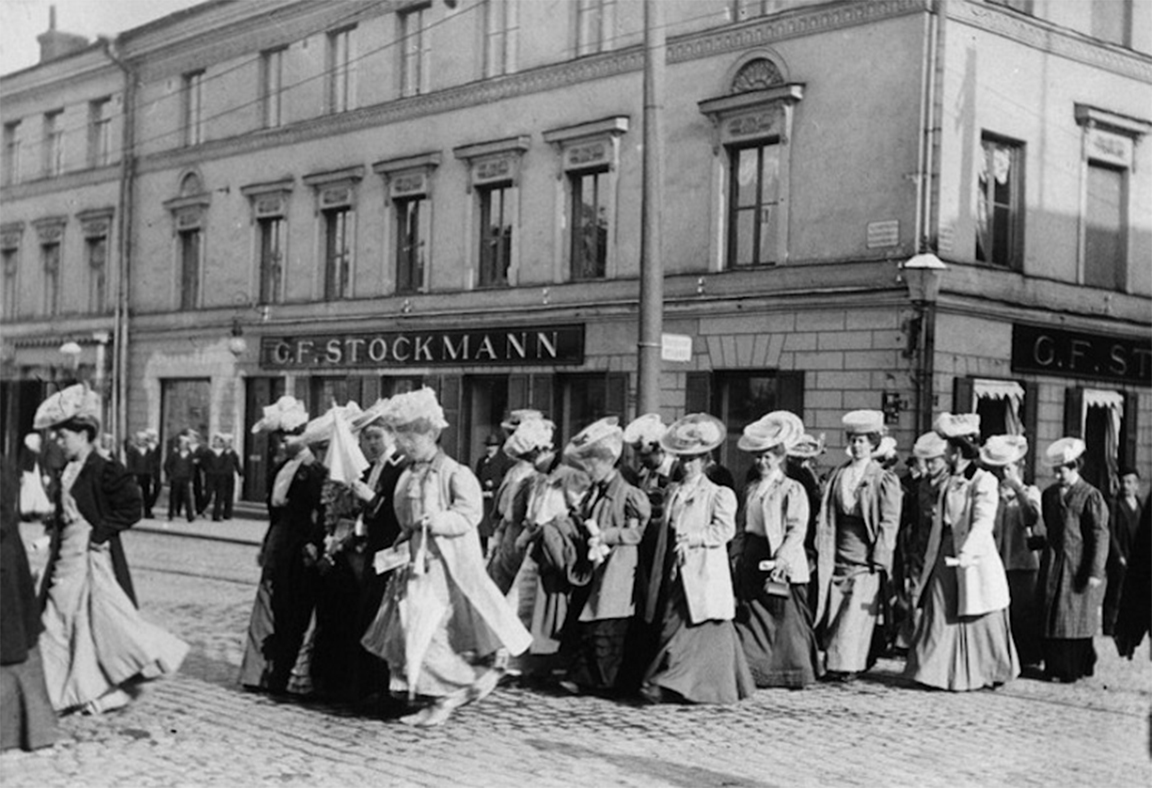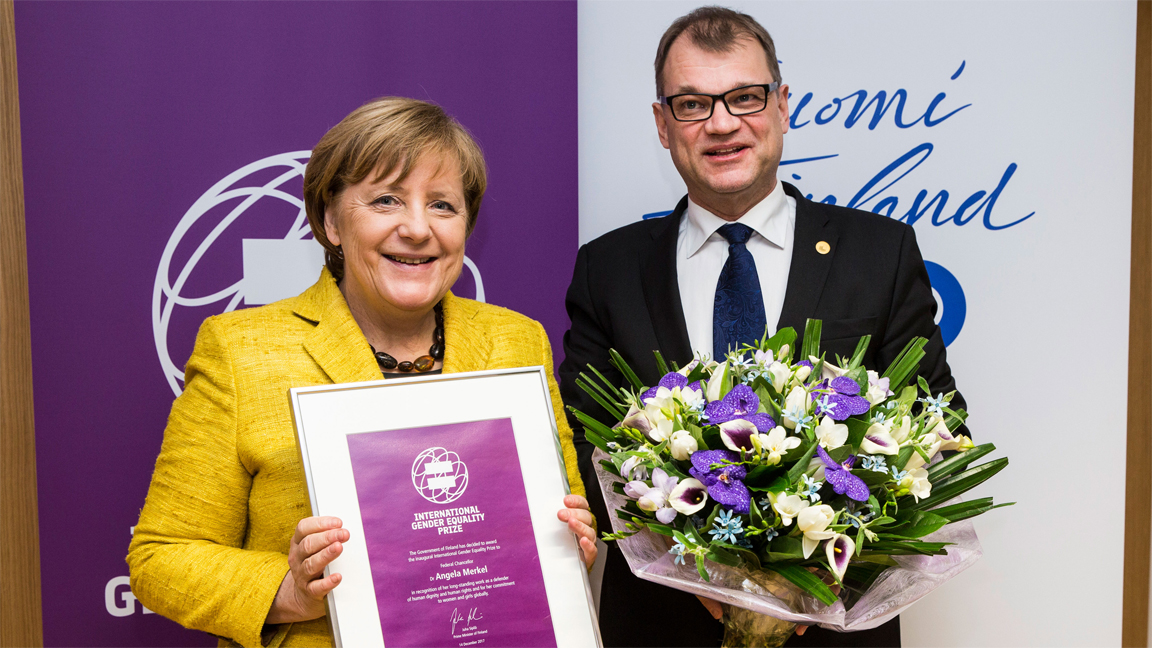As more countries work towards true gender equality in all facets of life, Finland can proudly say it was one of the first to foster this ideal.

Finland was the first country to grant women full political rights, including the right to vote. Universal suffrage became a Finnish law in 1906, when anyone aged 24 and over, maids and crofters included, was granted an equal vote. Then, people would often travel on skis to the nearest village to mark their choice on a ballot with a red line. Female Finnish journalist and politician Hedwig Gebhard proclaimed "furthering decency" and "improving the position of women," among others, as matters of conscience that women should vote for in her election proclamation. Women were not only in the poll lines, but on the ballot. Out of the 62 candidates who were women, 19 were elected to first Parliament, most of whom were representing the Social Democratic Party.


Women have been represented in positions of political power in more recent Finnish history, too. In 2003, Anneli Jaatteenmaki became the first female Prime Minister of Finland. Finland's first female president, Tarja Halonen, served from 2000 until 2012. With an approval rating of 88%, Halonen was a very popular president. She was widely known for her interest in human rights issues, fighting for LGBT and women's rights issues throughout her presidency. She is a member of the Council of Women World Leaders, an international network of past and present female presidents and prime ministers who seek collective action on issues critical to women's equality. In fact, in 2007 there was a female majority in the government of Finland.

Looking back again, there is a lot that led to women having a voice and being valued in Finland today. In the 1850's, Finnish women activists spoke about the importance of education for girls after reading works from the likes of John Stuart Mill. In 1878, equal inheritance rights were granted for women and men and in the 1880's, the first women's organizations were established. In 1886, the first coeducational school was opened, and at the turn of the century, women won the right to study at university.

Married women have also had the right to paid employment without needing consent of their husbands for a century. Similarly, a new marriage act in 1930 was passed that released married women from the guardianship of their husbands. This freedom to work and recognition as an equal individual was important and necessary, as women kept the wheels turning while men were fighting at the forefront of the war. Women worked in hospitals, factories, and kept the farms running, and continued to do so after the war was over. Soon, women working and pursuing their own careers became the norm - but most importantly, they had the choice to.

It's often hard to imagine that not that long ago, women didn't have many of the basic human rights that men did. It still is uplifting to look at how Finland took initiative to start making positive changes before many of its neighbors near and far did. Finland still has work to do in terms of social progress, as does the rest of the world; and the rest of the world can look to Finland as an example of pioneering progress.





